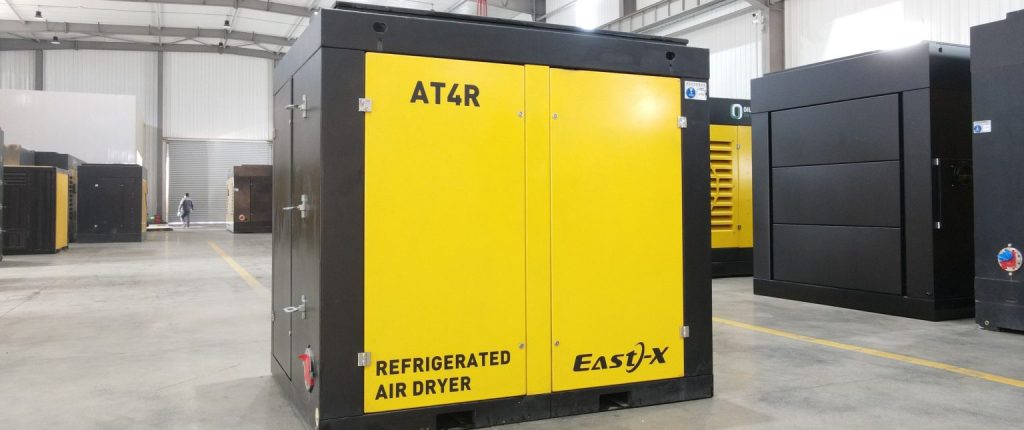Moisture is a major concern in compressed air systems, leading to corrosion, equipment failure, and compromised product quality. Refrigerated air dryers offer a practical and cost-effective solution for removing moisture in various industrial settings including manufacturing, electronics, food, and power generation.
Working Principle
Refrigerated air dryers work by cooling the compressed air to a temperature at which water vapor condenses into liquid, which is then drained from the system. Key components include a heat exchanger, refrigeration compressor, condenser, evaporator, and moisture separator. These dryers typically achieve a pressure dew point of 2°C to 10°C, which is sufficient for most general industrial applications.
Key Advantages
- Compact and reliable: Designed for continuous operation.
- Low maintenance: No desiccant to replace, unlike adsorption dryers.
- Cost-effective: Ideal for standard air quality requirements.
Best Use Cases
- Pneumatic systems
- Paint and coating lines
- Packaging and automation systems
- General industrial air supplies
How to Select the Right Dryer
Key selection factors include:
- Compressed air flow rate (Nm³/min)
- Inlet and ambient temperature
- Target pressure dew point
- Cooling method (air-cooled or water-cooled)
- Integration with filters and air receivers
For higher air quality demands, consider pairing a refrigerated dryer with high-efficiency coalescing filters to remove oil and particulate contaminants.


